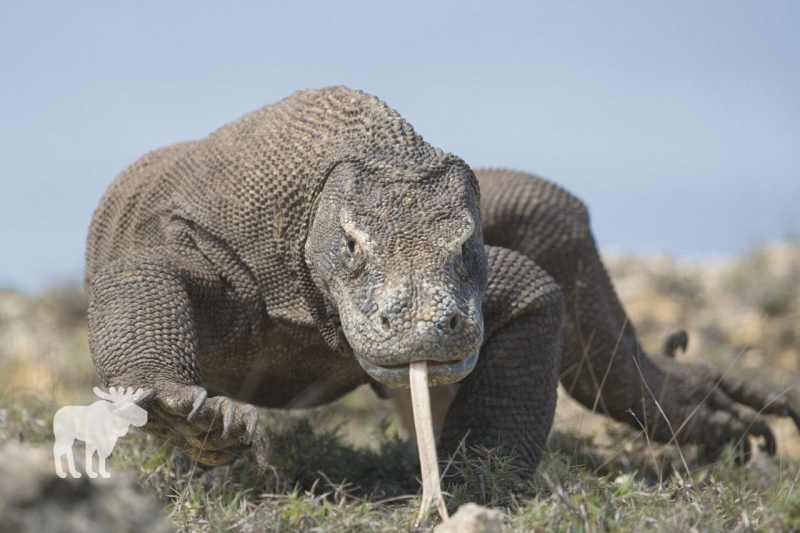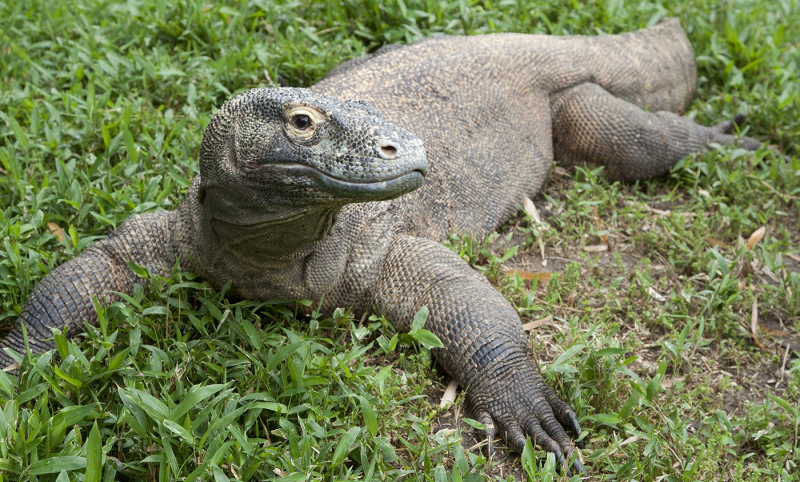Komodo dragon
With a maximum weight of 190 lbs and a maximum length of 3 meters, the Komodo dragon is almost as infamous as it is feared. They are the largest species of lizard currently recognized, and they are only found on Indonesia's volcanic islands.
In their natural habitat, komodo dragons are the apex predators and are at the top of the food chain. Their method of hunting involves using the poisons in their saliva to render their victim immobile. They then eat by biting with their pointed teeth. Instead of killing their victim, the poison's purpose is to render it helpless and keep it from fleeing.
The toxin has a hypotensive and anticoagulant effect. As a result, the victim's blood thins and leaves the body more quickly, the blood pressure falls, and the body stops functioning. Escape is impossible in this shocking state. Up until recently, it was believed that the effect on the blood was caused by leftover food in the mouth. It was believed that this diet would proliferate bacteria and cause blood poisoning.
As a result, the Komodo dragon represents a particularly serious threat. However, Komodo dragon attacks on people are rather infrequent. Because they typically do not share the same food web as humans, they might not view them as desirable. However, this enormous reptile has the ability to strike if it feels threatened or thinks an outsider is invading its territory.










